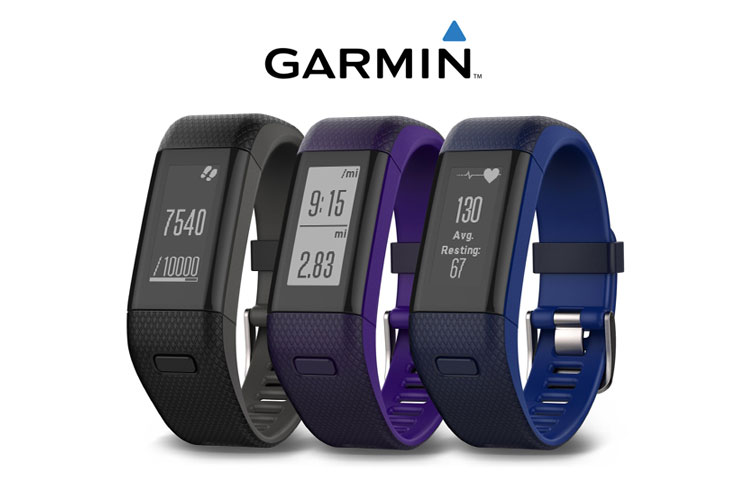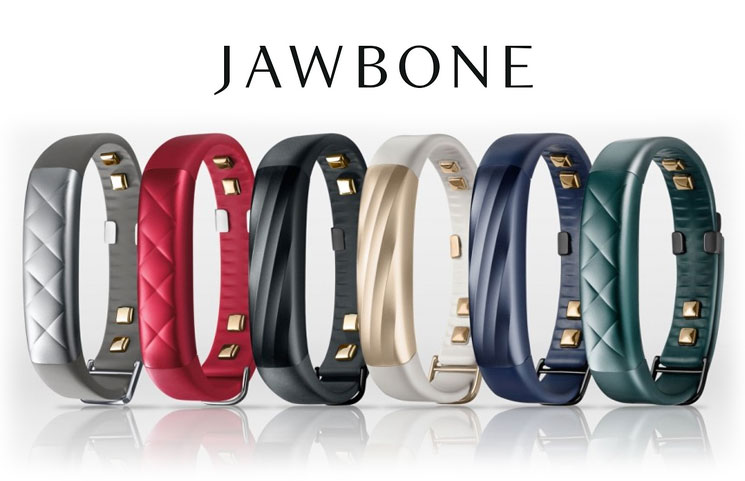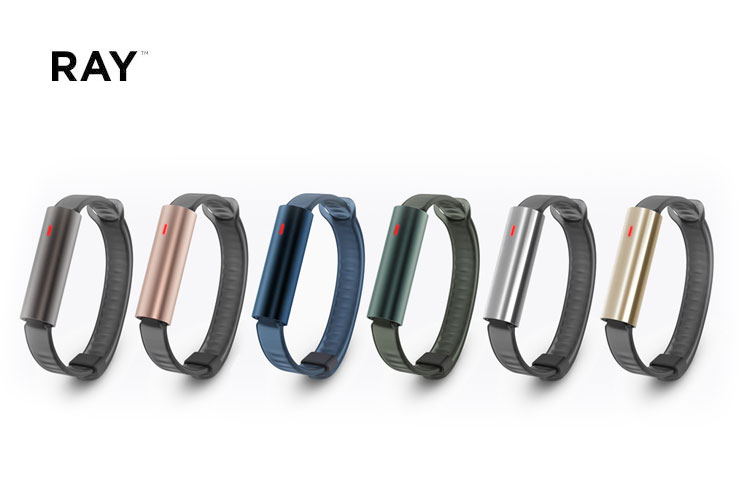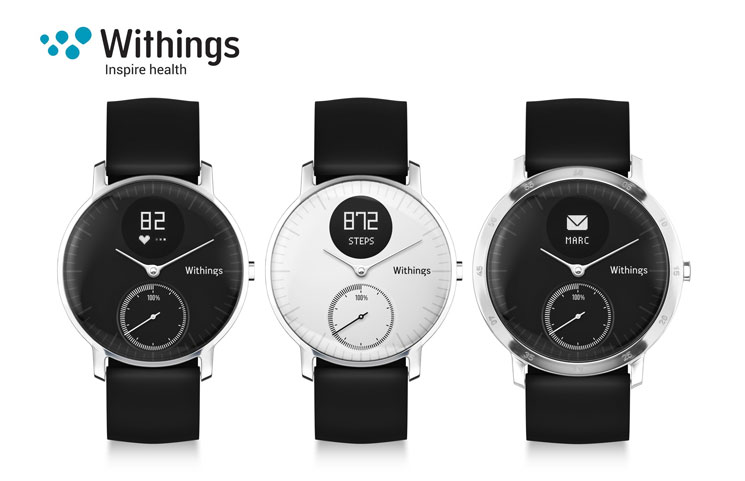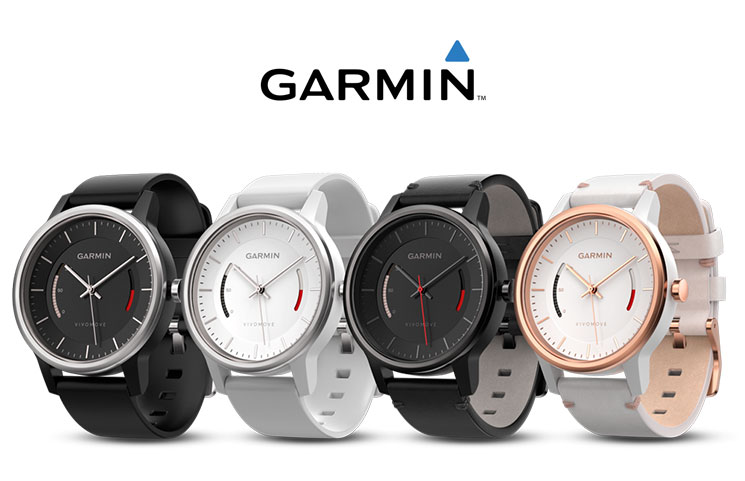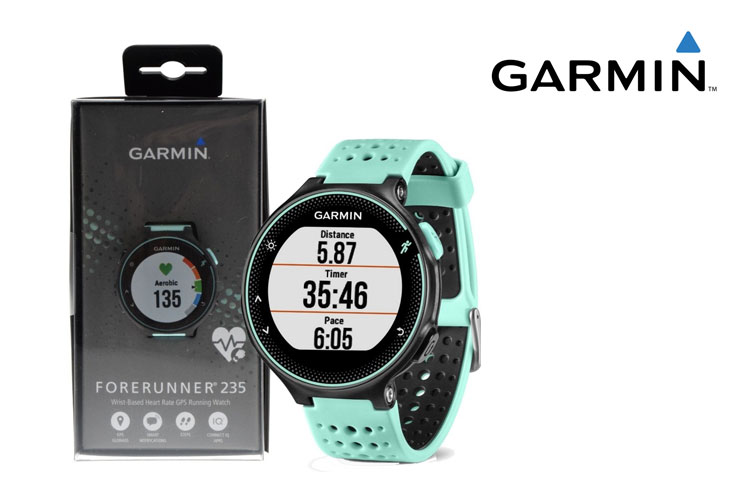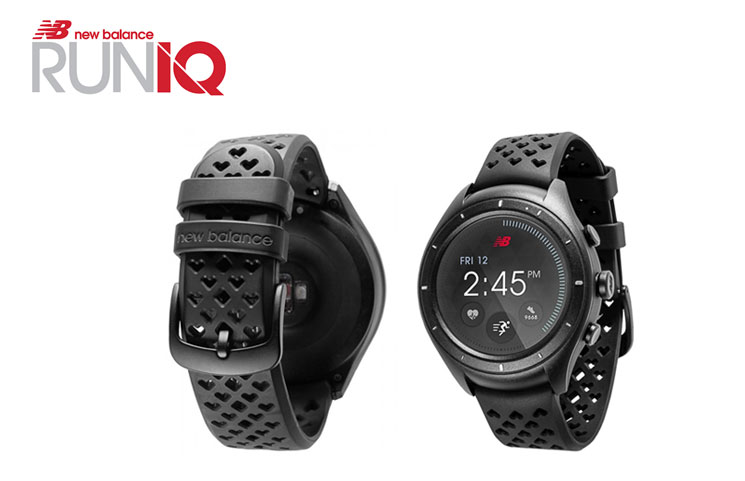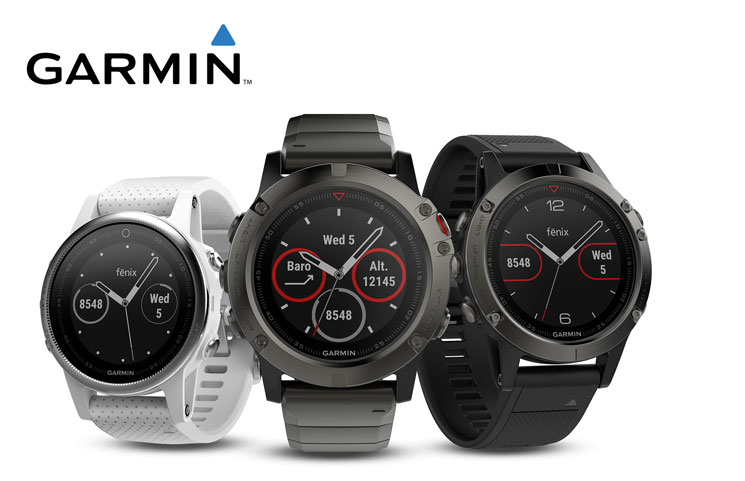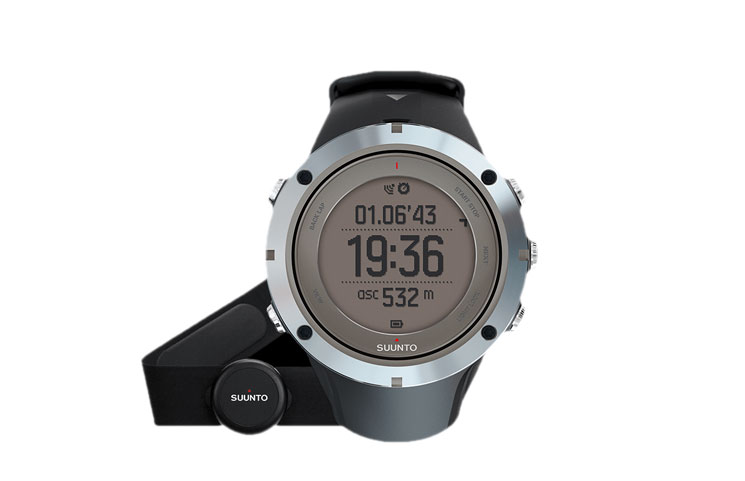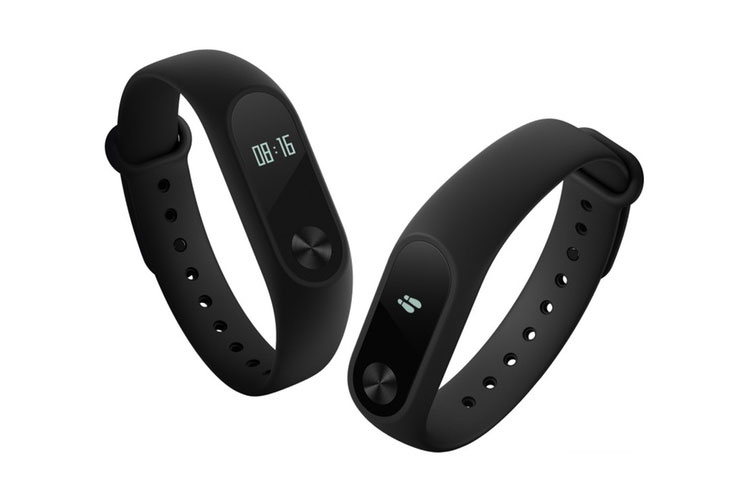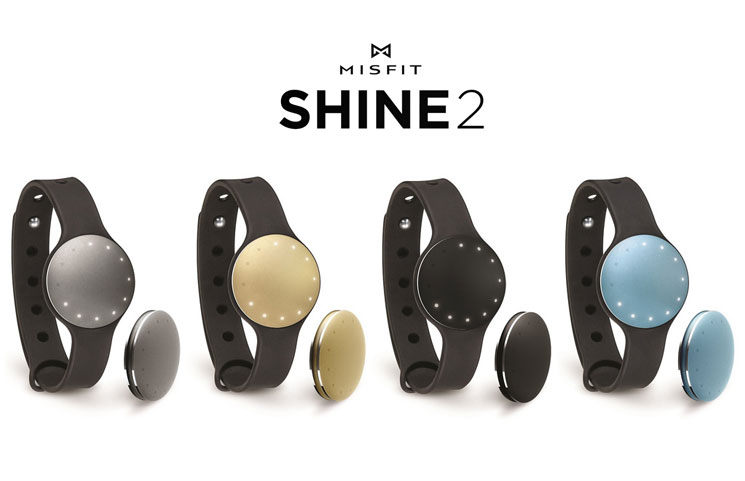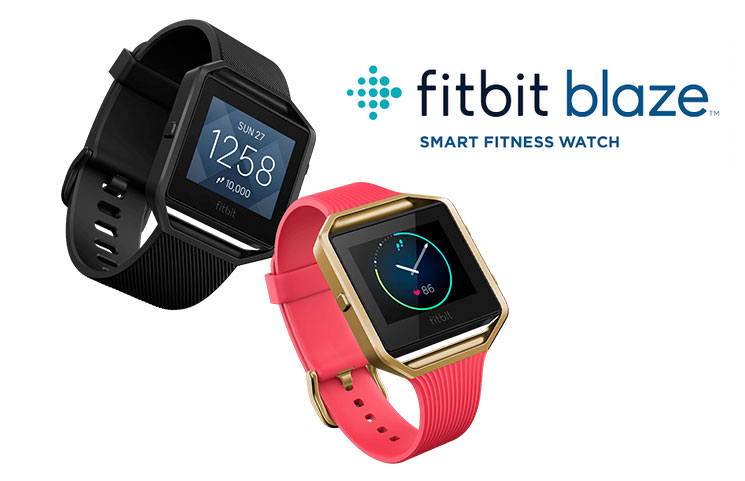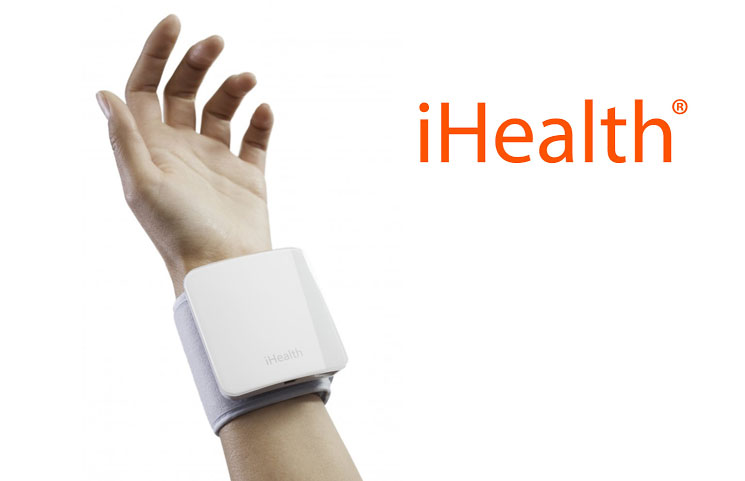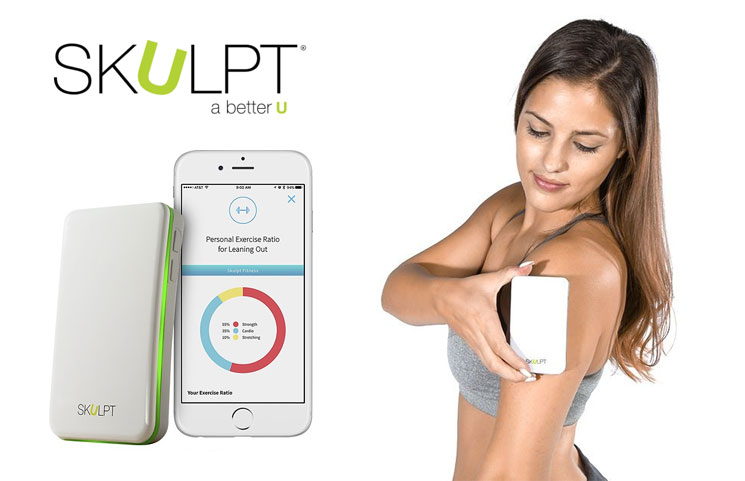Quantified self movement is rapidly becoming one of the biggest tech trends of 2017. Wearable health tracking technology has exploded in popularity over the last few years, with devices that track heart rate, calories burned, steps taken, and distance traveled finding their way around the wrists of millions of fitness enthusiasts around the world.
While 2016 brought us an extensive range of wearable tech, the new year promises to deliver an innovative wave of dynamic fitness trackers and health gadgets that offer a dynamic range of new features and functions. The sheer amount of options available on the market can make it difficult to determine which smartwatch or fitness tracker to choose.
The best way to find out what kind of wearable tech is right for you is to identify your key needs- whether you want to track your sleeping habits, navigate remote hiking trails, or make a fashion statement, there’s a wearable that meets your requirements out there.
Table of Contents
In this article, we’re going to round up the very best wearables, fitness trackers, smartwatches, and health gadgets of 2017 and present our picks for the top tech in each category, sorted by function. In addition to assessing the very best wearable health trackers, we’ll also take a look at some of the most unique cutting-edge tech that has hit the market this year.
Let’s begin by taking a look at the best fitness tracker of 2017:
Best Fitness Tracker of 2017
To determine which solution wins the grand prize of Best Fitness Tracker of 2017, we’ve assessed multiple factors such as price, design, functionality and smartphone integration. A fitness tracker should be dynamic and versatile, able to provide detailed information in any environment and stand up to the stresses caused by intensive physical exercise.
Winner: Fitbit Charge 2
The Fitbit Charge 2 is our pick for the overall best fitness tracker of 2017. The Fitbit range has been a market leader since release, and has maintained its position at the top of the fitness tracker food chain due to a combination of premium quality workmanship and constant innovation. Fitbit Charge 2 is no different, improving upon the functionality and design of previous Fitbit iterations without compromising on style or affordability.
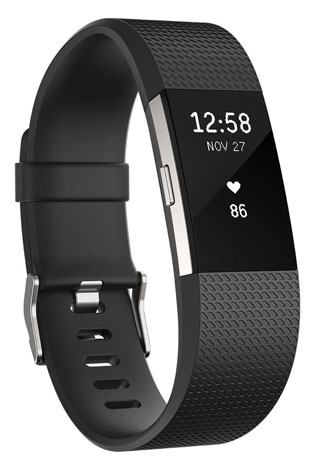 The Fitbit Charge 2 builds upon the solid foundation of the Fitbit Charge HR, including all of the custom features that are unique to the Fitbit range. Fitbit’s PurePulse optical heart rate tech come standard in the Charge 2, along with all of the added bells and whistles you’d expect from the leading fitness tracker manufacturer.
The Fitbit Charge 2 builds upon the solid foundation of the Fitbit Charge HR, including all of the custom features that are unique to the Fitbit range. Fitbit’s PurePulse optical heart rate tech come standard in the Charge 2, along with all of the added bells and whistles you’d expect from the leading fitness tracker manufacturer.
Resting heart rate, calories burned, distance traveled and floors climbed as well as sleep tracking are built into the sleek form factor of the Charge 2, but the standard LED display has been significantly enlarged.
The new features incorporated into the Fitbit Charge 2 offer enhanced functionality and improved data comprehension. A built-in location tracker integrates into the navigational capabilities of your smartphone, allowing for higher resolution tracking of distance, speed, and steps taken. This new tracking ability allows users to view a map of the route taken during exercise activities on their phone, which seamlessly blends with multi-sport activity tracking features and push notification capability.
The insights and analytics provided by the Fitbit app have also been expanded upon with the Charge 2, providing users with new ways of interpreting the data gathered by the device.
A new and interesting feature provided by the Fitbits analytics software, called “Cardio Fitness Level”, delivers an insight into the overall fitness level of a user by presenting them with a “Cardio Fitness Score” that is calculated based on V02 max and fitness performance. Other new functions include Guided Breathing Sessions that leverage the calming and relaxing effect of mindful breathing practices.
Offering extensive functionality supported by a feature-rich paired app and a high resolution desktop application, the Charge 2 provides fitness enthusiasts with detailed and easy-to-interpret data gathered by a sleek, stylish band available in a wide range of colors. The Fitbit Charge 2 is the standout winner of this year’s Fitness Tracker Roundup.
Runner Up: Garmin Vivosmart HR
Garmin, Fitbit’s next-closest competitor in terms of functionality and price, has released a richly-featured and well designed rival to the Charge 2 that, while almost as good as the Charge 2, slides in at second place for the title of best fitness tracker of 2017.
 Packed with a feature list almost as extensive as the Charge 2, the Garmin Vivosmart HR offers round-the-clock heart rate monitoring, autonomous functionality, sleep tracking, and push notifications.
Packed with a feature list almost as extensive as the Charge 2, the Garmin Vivosmart HR offers round-the-clock heart rate monitoring, autonomous functionality, sleep tracking, and push notifications.
Like the Charge 2, the Vivosmart HR packs a high resolution built in touchscreen, although it’s not as big as the Fitbit solution. A broad spectrum of information can be accessed via the screen, including calories burned, distance traveled, heart rate, and resting heart rate.
Floors traveled are measured by a built in barometer, and a new wrist based heart rate sensor provides a level of biometric analysis that can compete head-to-head with Fitbit.
Garmin offer both a purpose-built smartphone app and a fully-featured desktop environment for managing and viewing the data their device gathers. The Vivosmart is available in two iterations- the Vivosmart HR, and the HR+, which offers a few extra features such as GPS tracking.
The HR+ actually possesses some features not found in the Fitbit Charge 2, such as water resistance down to 50 meters, but unfortunately doesn’t include a swimming mode.
While Garmin’s new tracker is feature-rich and offers a broader scope of information than the Fitbit Charge 2, what it possesses in functionality it lacks in user-friendliness. The app and desktop application can both occasionally be difficult to navigate, and as far as style and aesthetics go, the Fitbit Charge 2 is the clear winner over the chunky form factor of the Garmin Vivosmart HR. The one advantage the Garmin solution offers is a small price advantage, at roughly 14% less than the Fitbit solution.
Sleep Tracking & Analytics
Sleep is incredibly important to the human body- according to CDC, between 50-70 million adults in the United States suffer from sleep issues or disorders.
Without adequate sleep, the body isn’t able to recover from intensive exercise, making in an integral part of the path to fitness. Sleep tracking devices assist in managing your sleep and promote better sleeping habits- let’s take a look at the best sleep tracker of 2017:
Winner: Jawbone UP3
The Jawbone UP3 is a stylish, screen-free fitness tracker with a focus on sleep tracking and lifestyle management. Featuring many of the functions you’d expect from a fitness tracker including heart rate tracking, Smart Coach active training functionality, activity tracking, and detailed data insights, the UP3 is a fully-featured smart wristband, but falls behind both the Fitbit Charge 2 and Garmin Vivosmart due to the lack of a built-in screen- the Jawbone UP3 relies entirely upon your smartphone for interaction and data delivery.
 What the Jawbone UP3 lacks in screen functionality, however, it makes up with in sleep tracking functionality. The UP3 sleep tracker is able to track sleep function and automatically measure deep sleep, light sleep, and REM sleep, which is the critical stage of sleep in which healing occurs.
What the Jawbone UP3 lacks in screen functionality, however, it makes up with in sleep tracking functionality. The UP3 sleep tracker is able to track sleep function and automatically measure deep sleep, light sleep, and REM sleep, which is the critical stage of sleep in which healing occurs.
The profound level of insight delivered by the UP3 is provided by a series of sensors that measure body temperature, heart rate, perspiration and galvanic skin response.
The UP3 syncs with a smartphone via bluetooth to provide information to users, with the smartphone app almost as easy to use as the Fitbit app.
The autonomous features of the app are also surprising- the UP3 is able to automatically sense when the user is performing a variety of activities including running, tennis, hiking, and cross training. The sensors in the UP3 are even able to detect when a user is falling asleep, negating the need to put the device into sleep mode.
Aside from the standard features expected of a fitness tracker, the UP3 also deliver helpful tips on how to enhance productivity and promote better sleep. While the UP3 may fall short of solutions such as those provided by Garmin or Fitbit, there is no better tracker on the market for sleep tracking and analytics.
Runner Up: Misfit Ray
The Misfit Ray is a fitness wearable that is purpose-designed to offer comprehensive and detailed sleep tracking. Packed with many standard fitness tracker features such as distance traveled, calories burned, activity tagging, and steps taken, the Ray is a bog-standard fitness tracker- except when it comes to sleep tracking.
 The sleep tracking functionality of the ray provides deep insight into sleeping patterns, biological responses and patterns during sleeping hours, sleep frequency and overall quality, as well as information on the ratio of light, deep, and REM sleep achieved.
The sleep tracking functionality of the ray provides deep insight into sleeping patterns, biological responses and patterns during sleeping hours, sleep frequency and overall quality, as well as information on the ratio of light, deep, and REM sleep achieved.
The unit itself is shaped from aircraft-grade anodized aluminum, which hides 8mm spring bars for attaching the unit to a variety of accessories and lanyards. The sensor suite includes a capacitive touch sensor and a 3-axis accelerometer for movement tracking, with information displayed on the device via a multi colored LED array.
One of the major advantages offered by the Misfit Ray is that the battery life of the device is incredibly long, lasting up to four months of usage from just one charge. The misfit is also completely swimproof for up to 50 meters, and can be worn either as a pendant or wristband, consisting of a stylish elemental bar form factor. The misfit can also be used to control camera function on your smartphone, control music, and silence your device.
The Misfit Ray doesn’t provide the same level of detail as the Jawbone UP3, but definitely offers a wide range of unique advantages that make it a highly desirable solution for fitness enthusiasts that are seeking to track sleep in addition to waterproof swim tracking capacity. The swim tracking offered by the Misfit Ray is provided by Speedo, and is able to count laps for 25 and 50 meter pools, making it a close runner up to the Jawbone UP3.
Most Stylish Fitness Tracker
When it comes to wearables, style and appearance is one of the most important factors to many users. It’s no longer necessary to compromise functionality for style, as many of the most feature-rich devices are now some of the most fashionable.
Some new fitness trackers and smartwatches are indistinguishable from high-end designer watches- let’s take a look at the most stylish fitness tracker of 2017:
Winner: Withings Steel HR
Withings is the latest addition to the Nokia brand umbrella, who are often credited with bringing mobile technology to the masses with their original Nokia 3310 mobile phone. The company has recently undergone a massive rebranding effort, with the new Withing label providing consumers with cutting edge, fashionable wearable tech.
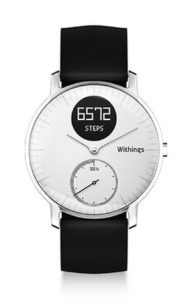 The new Withing range, including the Steel HR, takes most of the functionality of the underperforming Active range that has been released previously by the company and repackages it into a sleek, stylish, designer upgrade. From outward appearance, the Steel HR looks like a contemporary designer watch, but under the hood hides a wide range of fitness tracking functionality.
The new Withing range, including the Steel HR, takes most of the functionality of the underperforming Active range that has been released previously by the company and repackages it into a sleek, stylish, designer upgrade. From outward appearance, the Steel HR looks like a contemporary designer watch, but under the hood hides a wide range of fitness tracking functionality.
Incorporating a heart rate tracker, smart-learning activity companion, automatic sleep monitor, and even a personal assistant that can text, call, and deliver notifications, the Steel HR is an intuitive and intelligent smartwatch/fitness tracker hybrid that works around the clock. With no buttons to push, the Steel HR is able to autonomously recognize a huge range of activities.
The bluetooth connectivity provided by the Steel HR also presents information on the face of the watch, which includes missed call information, texts, calendar updates, alarms, and fitness tracking details.
With a battery that lasts up to 25 days, water resistance up to 50m, and compatible with a wide range of accessories, the Withings Steel HR is our pick for the most stylish fitness tracker of 2017.
Runner Up: Garmin Vivomove
The Vivomove is our second Garmin pick for the 2017 fitness tracker and smartwatch roundup. Released as a direct competitor to the Withings Steel HR, the Vivomove is indiscernible from a classic, stylish analog watch.
 Combining the best of traditional design with cutting-edge tracking technology and functionality, the Vivomove is available in a variety of design choices ranging from classic brown leather to contemporary matte black.
Combining the best of traditional design with cutting-edge tracking technology and functionality, the Vivomove is available in a variety of design choices ranging from classic brown leather to contemporary matte black.
The battery of the Vivomove is one of the best on the market, capable of powering the device for an entire year without needing to be replaced. The classic watch face features two digital bars that provide information on movement and steps, while the device is capable of autonomously monitoring exercise levels and sleep. The device also syncs automatically with the dedicated Garmin Connect software and app, assisting with planning and tracking progress.
A unique feature of the Vivomove is the “Time to Move” bar on the watch face. The Vivomove monitors user activity, and during periods of inactivity the red movement bar will fill up, pushing users to move and exercise more.
Automated cues provide motivation to hit fitness and activity goals, delivered via push notification, with regular health tip updates from health experts that function as virtual coaches.
The straps of the Vivomove are interchangeable, making it easy to switch from the gym to an upscale black tie event. While the Vivomove lacks an OLED screen built into the device itself, it’s a great option for those seeking discreet and fashionable fitness tracking and motivation.
Best Fitness Tracker For Running
Running is one of the best ways to build overall fitness- humans are actually the most efficient long-distance runners in the animal kingdom.
Run tracking is one of the most common and widely used applications of fitness trackers, with metrics such as distance traveled, calories burned, and time taken providing motivating insights into the progress of your cardio fitness. Let’s take a look at the number one fitness tracker for running in 2017:
Winner: Garmin Forerunner 235
Garmin’s Forerunner 235 is a purpose-built GPS tracking running watch with a built-in heart rate tracker. Perfect for fitness enthusiasts seeking to elevate their running game to the next level, the 235 offers basic fitness tracker and smartwatch capability with an additional range of dedicated running features.
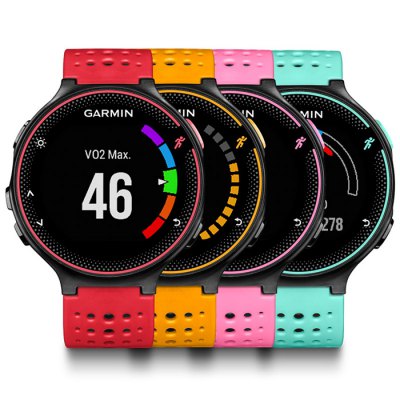 Able to accurately track distance, pace, time, and heart rate, the Forerunner 235 incorporates Garmin Elevate Heart Rate Technology to deliver 24/7 heart rate tracking.
Able to accurately track distance, pace, time, and heart rate, the Forerunner 235 incorporates Garmin Elevate Heart Rate Technology to deliver 24/7 heart rate tracking.
The Forerunner 235 syncs with Garmin’s proprietary Garmin Connect suite, which delivers live tracking, motivational audio prompts, social media progress sharing, and smart push notifications.
The entire face of the Forerunner is an OLED screen that can be customized with a variety of faces and widgets, allowing for unrivalled personalization of the data screens and content it provides.
Like other Garmin fitness trackers, the 235 incorporates activity updates to promote more frequent movement, as well as counting calories consumed throughout the day.
What makes the Garmin Forerunner 235 especially suited to running, however, is the ability to connect to GPS and GLONASS satellites to track positioning precisely in almost any environment. This GPS functionality also provides location-based weather conditions and forecasts directly to the watch face itself.
The battery of the Forerunner is a lithium ion rechargeable, offering 11 hours of constant training use, or nine days of activity tracking, notifications, and heart rate tracking.
As an added bonus, a find my phone feature and music controls add some ease-of-life smartwatch functionality. As one of the most competitively-priced GPS-enabled fitness tracking smart watches on the market, the Garmin Forerunner 235 is our pick for 2017’s best fitness tracker for running.
Runner Up: New Balance RunIQ
The RunIQ is a GPS-enabled smartwatch fitness tracking device from popular sports shoe manufacturer New Balance, who have teamed up with Google, Intel and Strava to create a dedicated running tracker that provides basic functionality with added smartwatch features.
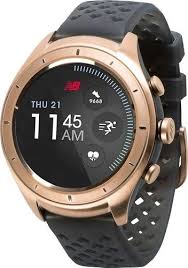 While the RunIQ isn’t as customizable as the Garmin Forerunner 235, it’s an interesting offering that delivers GPS tracking, heart rate monitoring, and communications interactivity at a low price compared to other GPS enabled trackers on the market.
While the RunIQ isn’t as customizable as the Garmin Forerunner 235, it’s an interesting offering that delivers GPS tracking, heart rate monitoring, and communications interactivity at a low price compared to other GPS enabled trackers on the market.
The partnership New Balance has forged with Strava allows users to connect with a broad community of runners from all around the world and share tips, techniques, and routes, while Google Play integration allows users to manage playlists via bluetooth.
Water resistant up to 5 meters, the RunIQ offers a 24 hour battery life and map functionality, but the design of the unit itself is less stylish than that of the Garmin Forerunner, with a decidedly chunky perforated band and buttons. If you’re looking for a no-frills, cost-effective GPS running tracker with basic smartwatch functionality, the New Balance RunIQ has you covered.
Best For Outdoors & Offroad
Smartwatch and fitness tracker functionality isn’t limited to use in just the gym or around the local park. Developments in GPS technology and extended battery life capacity means that wearables can now be taken off the beaten track to outdoors and offroad situations, such as hiking, camping, or other long-distance adventures. Let’s take a look at 2017’s best fitness trackers that are designed for the great outdoors:
Winner: Garmin Fenix 5
The latest iteration of the Garmin Fenix series has been in development for over 18 months now, and the wait has definitely been worth it. The Garmin Fenix 5 is one of the most intelligent, feature-rich, and well made smartwatches available on the market today, announced recently at CES17 in Las Vegas.
Designed specifically for the adventure lifestyle, the Fenix 5 is a rugged yet stylish multisport GPS watch that is arguably the most sophisticated solution out there.
 The Fenix 5 is ideal for outdoors enthusiasts, hikers, marathon runners, or multisports enthusiasts that want to stay connected and trackable while keeping active. Slimmer than previous iterations of the Fenix range, the Fenix 5 is available in three case sizes- 42mm, 47mm, and 51mm, which dictates the size of the built-in OLED screen.
The Fenix 5 is ideal for outdoors enthusiasts, hikers, marathon runners, or multisports enthusiasts that want to stay connected and trackable while keeping active. Slimmer than previous iterations of the Fenix range, the Fenix 5 is available in three case sizes- 42mm, 47mm, and 51mm, which dictates the size of the built-in OLED screen.
The Fenix 5 is built to last, with a sturdy stainless steel bezel, buttons, and rear case. It’s also available in a scratch-resistant sapphire lens edition which is complete with wifi connectivity.
The touchscreen watch face puts a wide range of statistical and movement data at the fingertips of the user, presenting key information through a performance widget that provides detailed information on the progress of workouts and projected results. Like all Garmin devices, the Fenix 5 connects to the Garmin Connect suite, and can be personalized with a wide range of watchfaces and widgets.
The sensor suite of the Garmin Fenix 5, however, is what makes it the very best outdoors smartwatch tracker of 2017. Preloaded with TOPO US mapping, guidance cues, data overlays, point of interest data, and routable cycling maps, the Fenix 5 offers full map functionality on the interactive watch face that gathers data from both GPS and GLONASS satellites, as well as a 3-axis gyroscope and barometer.
In addition to the advanced sensor suite, the Fenix 5 can be used to track a broad spectrum of sports. Specific tracking metrics are provided for activities such as swimming, cross country cycling, skiing, climbing, hiking, marathon activities, and many more.
Vertical oscillation and ratio metrics are also incorporated into the analytics suite, as well as an intelligent recovery advisor and V02 max calculator.
The Garmin Fenix 5 is the ultimate outdoors adventure companion and, although somewhat high in price when compared to some of the other options available in this list, definitely delivers excellent value for money and is our pick for the very best outdoors and offroad tracker of 2017.Runner Up: Suunto Ambit3 Peak.
Runner Up: Suunto Ambit3 Peak
The Suunto Ambit3 Peak, like the Garmin Fenix 5, is custom-built for the great outdoors. Suunto is a specialist smartwatch manufacturer that creates high-quality niche sports tracking devices, such as specialized dive computers, compasses, and premium watches.
 The Ambit3 Peak is a feature-dense multisport outdoors smartwatch that promises completely adventure-proof tracking, and a broad spectrum of survival and sports functionality.
The Ambit3 Peak is a feature-dense multisport outdoors smartwatch that promises completely adventure-proof tracking, and a broad spectrum of survival and sports functionality.
The GPS functionality of the Ambit3 actually beats out the Garmin Fenix 5 in terms of accuracy. Able to track GPS positioning within 5 seconds for up to 30 hours, or minute-by-minute accuracy for a massive 200 hours, the Ambit3 is designed for long journeys into the wild.
Suunto have incorporated their proprietary FusedAlti tracking system into the Ambit3 Peak, which combines accurate GPS data and barometric altitude to deliver constant route updates and weather tracking information in any environment.
The sports tracking functions of the Ambit3 Peak are as versatile as those of the Garmin Fenix 5. Able to track speed, distance traveled, pace, and heart rate, the Peak offers specialized tracking for swimming, cycling and running in almost any environment imaginable.
Running technique and gait analysis helps users to improve their form, and a range of recovery tests make it possible to manage recovery progress and status.
The Ambit3 Peak, although delivering superior location tracking and altitude information, comes in at second place when compared to the Garmin Fenix 5 as it’s a little too specialized to the outdoors to function as an everyday fitness tracker. If you’re a frequent climber or adventurer, however, the Ambit3 Peak is a great option that’s a little less expensive than the Garmin alternative.
Best Budget Tracker
Tracking your fitness with wearable tech doesn’t have to break the bank. Low-cost sensor tech has developed exponentially in recent years, making it possible to get an accurate, feature-rich tracker at a surprisingly low cost. Let’s examine the best budget fitness trackers of 2017:
Winner: Xiaomi Mi Band 2
Chinese manufacturer Xiaomi have been making waves in the tech world recently with their flagship-killing Redmi 4X phone, which provides much of the functionality of the latest Apple or Android offerings at a fraction of the price.
 The Xiaomi Mi Band 2 is no different. As the third iteration of Xiaomi’s fitness band range, the Mi Band 2 builds upon the success of its predecessors with a number of improvements.
The Xiaomi Mi Band 2 is no different. As the third iteration of Xiaomi’s fitness band range, the Mi Band 2 builds upon the success of its predecessors with a number of improvements.
The Mi Band 2 boasts a humble OLED display, one touch button, and an updated pedometer algorithm and design. Previous Mi Bands required users to access their smartphone to view status updates, so it’s refreshing to see Xiaomi respond to consumer demand with the new visual interface.
The Mi Band 2 is simple in design and function- able to track heart rate, steps, and time taken, most of the analytical inferences made by the band come from data gathered from the pedometer.
The limited sensor suite is the primary reason the Mi Band 2 is so low in price, but doesn’t majorly restrict functionality. Users are provided with idle alerts in the form of a buzzing vibrating reminder to keep them moving, while autonomous sleep tracking is performed through heart beat monitoring. The Mi Band 2 can also be used to proximity unlock compatible android smartphones, as well as deliver incoming call and message alerts.
The Xiaomi Mi Band 2 is also IP67 splash-resistant, meaning a little bit of sweat while exercising won’t do it any damage. The external frame of the device is also resistant to sweat-induced corrosion. Most importantly, the device has a 20-day battery life, which is a serious threat to some of the more expensive options on this list. Priced at under $40 USD, the Mi Band 2 is the clear winner for best budget tracker f 2017.
Runner Up: Misfit Shine 2
The Misfit Shine 2 is another budget fitness band that cuts down on sensor tech to lower price and increase battery life. Offering step, distance, calorie, and sleep tracking, the Shine 2 is able to pair with a smartphone to deliver all of the relevant notifications you’d expect- call and text notifications, movement reminders, calendar events, and alarms.
 The tiny form factor of the Misfit Shine 2 is what makes it stand out from the low-budget crowd- at just 8mm thick, it’s one of the slimmest tracker bands available on the market, and, amazingly, offers a battery life of over 6 months. The Shine 2 is powered by a replaceable coin cell battery that offers an incredible lifespan, but does need to be replaced twice yearly.
The tiny form factor of the Misfit Shine 2 is what makes it stand out from the low-budget crowd- at just 8mm thick, it’s one of the slimmest tracker bands available on the market, and, amazingly, offers a battery life of over 6 months. The Shine 2 is powered by a replaceable coin cell battery that offers an incredible lifespan, but does need to be replaced twice yearly.
Aside from all of the expected sports and exercise tracking functions, the Misfit Shine 2 can be paired with household appliances via the incorporated smart button technology, and is completely swimproof, with dedicated swim and lap tracking provided by Speedo. A major drawback of the Shine 2 is the lack of an OLED screen- fitness activity information is only available via cryptic red LED’s on the faceplate.
The Misfit Shine 2 is a great choice for budget conscious consumers, but, at twice the price of the Xiaomi Mi Band 2 and without a built-in screen, doesn’t quite make it to first place. It is, however, the only waterproof budget tracker with built in swim tracking, so if you spend a lot of time in the pool the Shine 2 is a standout choice.
Best Hybrid Fitness Tracker Watch
It can be hard to choose between a smartwatch and a fitness tracker. Hybrid fitness tracker watches combine the best of both worlds, but sometimes fall short in user experience due to over engineering.
It’s generally best to look for a solution that has watch functionality built on top of a fitness tracker base, rather than the inverse. Let’s take a look at the best hybrid fitness tracker watches 2017 has to offer:
Winner: Garmin Vivoactive HR
The Garmin Vivoactive HR is exactly what a hybrid fitness tracker smartwatch should be- a tracker first, and a watch second. Building on the features of the original Garmin Vivoactive hybrid, the Vivoactive HR delivers GPS tracking and a wide variety of sports apps that provide location-based swimming, biking, and running productivity trackers, all of which are able to function without the need for smartphone connectivity.
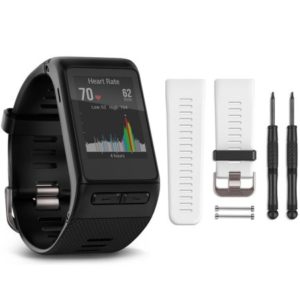 Like all Garmin products, the Garmin Connect suite provides a wide range of downloadable and customizable watch faces and apps, as well as smart coaching plugins. The battery life of the Vivoactive HR is decent, providing 8 days of battery life without GPS, or 13 hours with GPS tracking.
Like all Garmin products, the Garmin Connect suite provides a wide range of downloadable and customizable watch faces and apps, as well as smart coaching plugins. The battery life of the Vivoactive HR is decent, providing 8 days of battery life without GPS, or 13 hours with GPS tracking.
The sensor suite incorporates Garmin’s Elevate wrist heart rate tech, which uses an optical heart rate monitor.
The Vivoactive, unlike many other smartwatch activity trackers, is waterproof and can be used in the pool. The watch can provide detailed swim tracking including total and interval distance, stroke count, pace, and more. A dedicated swimming app, Swolf, provides detailed insight into stroke efficiency and time taken, making the Vivoactive an attractive solution for regular swimmers.
Aside from dedicated swimming, running and cycling functionality, the Vivoactive HR provides custom-built apps for golf, rowing, skiing, and a range of other sports activities.
In addition to fitness tracking, users are also able to pair their Vivoactive with their smartphone to manage phone calls, apps, messaging, alerts, music, and more. Overall, the Vivoactive HR meets all the requirements of both a high-quality smartwatch and fitness tracker, making it our pick for the best hybrid watch/tracker of 2017.
Runner Up: Fitbit Blaze
The Fitbit Blaze is the first offering in the Fitbit range to feature a full color touch screen in addition to comprehensive fitness tracking. Unlike the Garmin Vivoactive HR, the Fitbit Blaze doesn’t offer built in GPS functionality, but is able to pair with a GPS-enabled smartphone to monitor geographic location and project routes on a map.
 Complete with PurePulse 24/7 heart rate monitoring, on-screen workouts, smartphone notifications, and multi-sport tracking, the Fitbit Blaze includes all of the essentials expected from a Fitbit device such as all-day activity, auto-sleep, music control, and movement reminders.
Complete with PurePulse 24/7 heart rate monitoring, on-screen workouts, smartphone notifications, and multi-sport tracking, the Fitbit Blaze includes all of the essentials expected from a Fitbit device such as all-day activity, auto-sleep, music control, and movement reminders.
The automated SmartTrack tech that Fitbit offer is also present in the Blaze, which autonomously detects a wide range of activities and logs them without user input, reducing fiddling and logging time.
The smartphone connectivity offered by the Blaze is also up to the industry standard of smartwatch functionality, allowing users to access push notifications from Facebook and Gmail as well as manage music volume and playlists.
Sleep tracking is provided by the Blaze, but it’s not as in-depth as the Garmin solution and doesn’t provide insight into REM sleeping patterns.
Although the Fitbit Blaze is more limited in functionality than the Garmin Vivoactive, lacking dedicated multi-sport apps or water resistance, it’s definitely far more stylish and benefits from integration with the almost-flawless Fitbit app and dashboard. Users are also able to customize the look of the Blaze with interchangeable bands and a range of finishes.
Another advantage the Blaze holds over the Vivoactive is the sensor suite- each Fitbit Blaze houses a 3-axis accelerometer, an optical heart rate monitor, altimeter, light sensor, fibration monitor, and 3-axis gyroscope.
Despite these advantages in biometrics, the Blaze comes out as a little more expensive than the Vivoactive with more or less the same level of functionality, and thus slides in at second place for the best hybrid solution of 2017.
Top Smart Watch
Wearables aren’t all about fitness tracking. Smart watches have exploded in popularity in recent years, riding in the tech wake created by the release of Apple’s wrist-mounted revolution. Offering increased productivity, discreet smartphone management and a unique fashion statement, a smartwatch is the new must-have tech accessory.
Winner: Apple Watch Series 2
The Apple Watch Series 2 is a refined evolution of the original release, addressing many of the small issues of its predecessor and possessing several significant improvements. One of the major improvements of the newest Apple Watch iteration is a new, faster dual-core processor, as well as built-in GPS and waterproofing up to 50 meters.
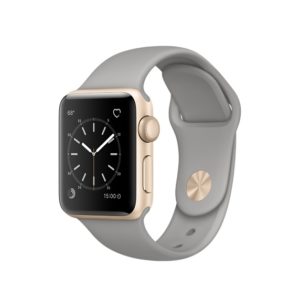 The display of the Apple Watch has also received an overhaul, and is now twice as bright as the previous model, performing far better in bright environments. The new GPS functionality delivers a suite of new tracking options, able to provide users with precise information on speed, distance, and pace, and offers continuous tracking, meaning there’s no need to stop and wait for the GPS to catch up.
The display of the Apple Watch has also received an overhaul, and is now twice as bright as the previous model, performing far better in bright environments. The new GPS functionality delivers a suite of new tracking options, able to provide users with precise information on speed, distance, and pace, and offers continuous tracking, meaning there’s no need to stop and wait for the GPS to catch up.
A custom heart rate sensor incorporated into the watch housing provides 24/7 heart rate monitoring, while a unique new speaker design allows for water resistance through a novel water-expelling acoustic function.
Apple has also reworked the algorithms the Apple Watch uses to monitor users, providing a more accurate assessment of calories burned. Users are able to select from a range of specific workout programs, track progress and goals, as well as install a variety of third-party apps.
Activity motivation is handled through a new “Activity Rings” visual, which assists in inspiring users to move more often throughout the day to increase total caloric burn, and active coaching provides continuous support and advice on the best methods to reach fitness and health goals.
One of the biggest advantages of the Apple Watch is Siri integration- users are now able to communicate with the Siri assistant directly through the Apple Watch.
With a wide range of interchangeable bands, cases and faces, the Apple Watch Series 2 is endlessly customizable, and, like all Apple products, is manufactured with a high degree of craftsmanship and quality. If you own an Apple smartphone and are considering a smartwatch purchase, the Apple Watch Series 2 is arguably the best solution out there and wins our pick for the best smartwatch of 2017.
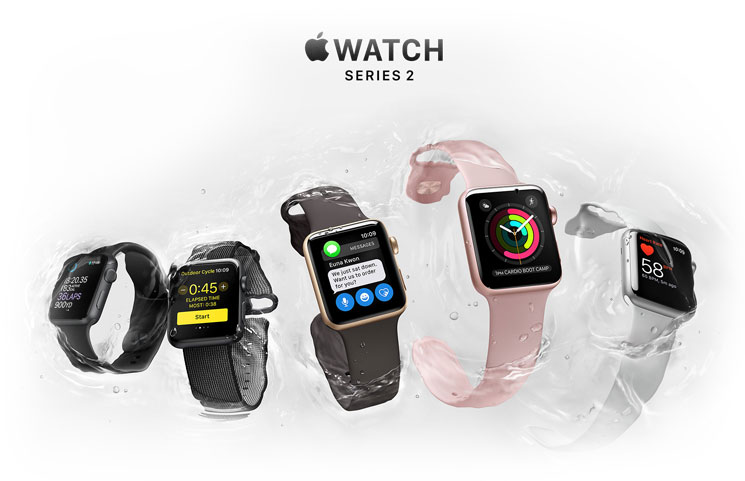 Runner Up: LG Watch Style
Runner Up: LG Watch Style
If you’re not an Apple fan, LG’s new range of smartwatches has you covered, with the new LG Watch Style delivering the pinnacle of Android-compatible smart watches. Sold directly by Google, the LG Watch offers users the ability to do away with the smartphone entirely. Boasting a 1.1 GHz Snapdragon processor and a variety of finishes including rose gold, the LG Watch Style is a serious competitor to the Apple Watch Series 2.
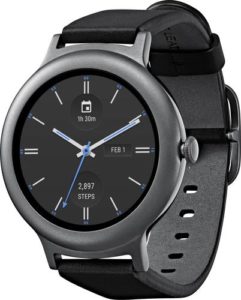 Slim and stylish, the LG Watch is constructed from stainless steel and is just 10.79cm thick, with an IP68 water and dust resistance rating. Each Style Watch boasts a 1.38 inch touch display with 360 x 360 pixel resolution, which, while not as good as the Apple offering, delivers crystal-clear visual fidelity.
Slim and stylish, the LG Watch is constructed from stainless steel and is just 10.79cm thick, with an IP68 water and dust resistance rating. Each Style Watch boasts a 1.38 inch touch display with 360 x 360 pixel resolution, which, while not as good as the Apple offering, delivers crystal-clear visual fidelity.
Control is managed through an innovative combination of touch gestures and the crown wheel built into the side of the watch, which provides an intuitive and satisfying experience.
The LG Watch style is powered by a dedicated, custom-built Snapdragon Wear processor and ships with 4GB on-board storage, and, in a move that makes it possible to avoid smartphones altogether, offers LTE connectivity. The watch also offers NFC, wifi, and bluetooth connectivity.
The biometric suite includes a basic heart rate monitor, ambient light sensor, accelerometer, and gyroscope, although there are no native applications out of the box apart from the standard Google app range.
While the LG Watch Style is unique and visually appealing, it does lack much of the biometric functionality of the Apple Watch Series 2, making it a less effective tool for fitness tracking. The lack of GPS functionality or an optical heart rate monitor is extremely noticeable, making it a solid, if underwhelming, runner up to the Apple Watch Series 2 as second-best smartwatch of 2017.
Best Fitness Tracker With Active Coaching
Finding a fitness tracker that is able to provide information on your movement and activity is great, but it’s often only half of the battle in getting fit. There are several new models of fitness tracking devices that, in addition to providing extensive information on your activity levels, dispense coaching, training, and form advice to help you get the most out of your workouts.
Winner: Moov Now
The Moov Now is marketed as a multi sport “wearable coach”, and is one of the first fitness trackers available on the market that provides comprehensive, in-depth coaching and form advice.
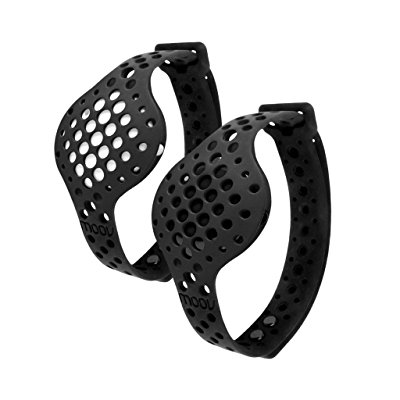 The unique design of the Moov Now allows it to do what other fitness trackers can’t- it actually has the ability to interpret the data it collects and deliver meaningful, helpful insights into how you can best improve your technique to get fitter.
The unique design of the Moov Now allows it to do what other fitness trackers can’t- it actually has the ability to interpret the data it collects and deliver meaningful, helpful insights into how you can best improve your technique to get fitter.
Unlike other fitness wearables, the Moov Now doesn’t have to be worn on the wrist- in fact, it actually works better when multiple Moov units are worn on both the wrist and the ankle. The Moov Now works by tracking the movement of the user with an in-built accelerometer that analyzes the movements made during physical activity, measuring motion, impact, and velocity to create a real-time 3d image.
The technology that is used to capture this image is the same as the that used in strategic missiles, making it one of the most accurate full-body tracking solutions available.
From the data gathered by its unique tracking technology, the Moov Now is able to supply users with comprehensive instruction on the form they use while exercising, delivering actionable advice on the best way to get the most out of their movement.
Able to coach users on a wide range of activities including running, cycling, swimming, and boxing, the Moov Now offers real-time audio coaching delivered through a paired smartphone.
In addition to real time coaching, the Moov is able to provide long-term training programs that continuously monitor and improve form, gradually increasing in intensity to deliver real-world results. Sleep tracking is also offered by the Moov app, allowing fitness enthusiasts to ensure they’re getting the recovery time they need.
There aren’t any solutions available on the market today that are like the Moov Now. While it may lack all of the bells and whistles that come standard with solutions such as the Apple Watch or Fitbit Blaze, it’s the only tracker that can provide you with your own dedicated personal training AI, and for this reason, it’s our pick for the best active coaching fitness tracker of 2017.
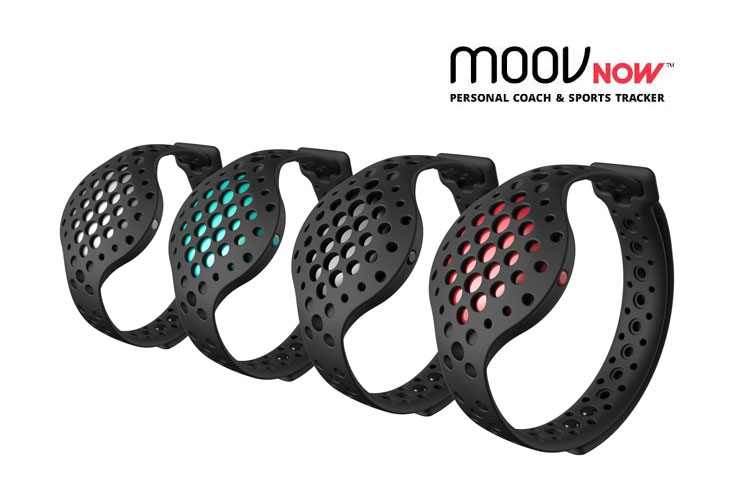 Runner Up: Adidas miCoach Smart Run
Runner Up: Adidas miCoach Smart Run
The Adidas miCoach Smart Run is an older wearable, and was released in late 2013, but has been one of the most solid, reliable, and effective active coaching wearables for the last few years.
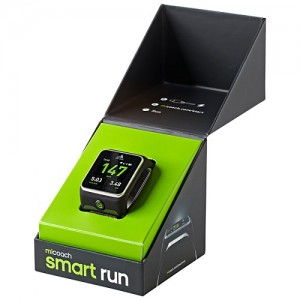 The reason for its inclusion on our list of 2017’s best active coaching fitness trackers is that, while the tech is older than what is available in more recent releases, it has the advantage of several years of tweaking, updating, and refining to make it a powerful active training tool.
The reason for its inclusion on our list of 2017’s best active coaching fitness trackers is that, while the tech is older than what is available in more recent releases, it has the advantage of several years of tweaking, updating, and refining to make it a powerful active training tool.
For an older device, the miCoach Smart Run boasts an impressive range of features and sensors, and was groundbreaking at the time of release. Incorporating on-board GPS, 3GB of built-in music storage, and active heart rate monitoring, the Smart Run works in a similar fashion to the Moov Now, delivering active coaching audio cues to keep fitness enthusiasts focused and motivated.
As the miCoach is now several years old, it boasts a massive library of training programs and interactive exercise tutorials, which can be configured and customized to meet your health and fitness goals.
While not as cutting-edge as the Moov Now, the Adidas miCoach Smart Run barely shows its age and is a solid option if you’re looking for an active coaching solution, especially now that it has fallen in price significantly.
 Best Blood Pressure Tracker
Best Blood Pressure Tracker
Blood pressure monitors don’t exactly fit into the same category as fitness trackers, but recent developments in the miniaturization of blood pressure measuring technology have led to the release of incredible new wearables that are able to deliver highly accurate and simple blood pressure measurement at home.
Winner: Withings Wireless Blood Pressure Monitor
Withings, Nokia’s new wearable technology arm, has released a range of fitness trackers and health tech in the last year that has revolutionized some of the more complex aspects of home health management.
A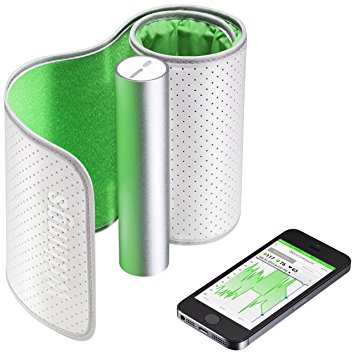 t-home or mobile blood pressure trackers have traditionally been bulky and devoid of innovative function, but the new Withings Wireless Blood Pressure Monitor changes this industry standard.
t-home or mobile blood pressure trackers have traditionally been bulky and devoid of innovative function, but the new Withings Wireless Blood Pressure Monitor changes this industry standard.
Consisting of a simple arm strap and sleek, stylish sensor bar, the Wireless Blood Pressure Monitor from Withings is medically-approved by the FDA and provides instant color-coded feedback on blood pressure levels that is based on both the American Heart Association and European Society of Hypertension guidelines for healthy blood pressure.
Paired with a dedicated smartphone app that guides users through the blood pressure measurement process, the Withings blood pressure solution is elegant and easy to use.
The Health Mate app that does all of the heavy diagnostic lifting of the device is able to store all of the user’s blood pressure readings and autonomously sync with the Withings Health Cloud, creating easy to understand charts and statistics on overall cardiovascular health. Compatible with both iOS and Android, the Withings Wireless Blood Pressure Monitor is able to measure blood pressure from 0 to 285 mmHg, monitor heart rate, and offers automatic inflation and controlled release.
Withings is providing consumers with medical-grade measurement technology that can be used simply and easily in the comfort of their own homes in a sleek and stylish solution, and for that wins our pick for the best blood pressure tracker of 2017.
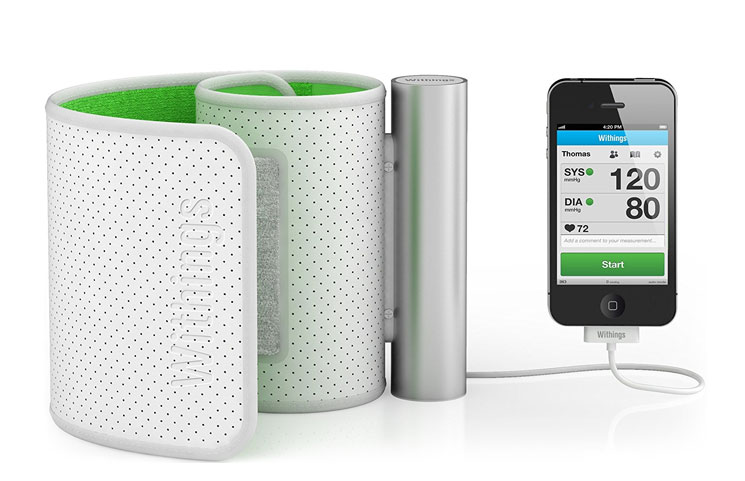 Runner Up: iHealth Sense
Runner Up: iHealth Sense
The iHealth Sense is a no-frills wireless blood pressure monitor that offers clinically-tested and FDA-approved blood pressure measurement in a wireless wearable that is compatible with both iOS and android.
 Approved by both the BHS and DABL for accuracy and reliability, the iHealth Sense is able to deliver fast blood pressure readings on the go from a paired smartphone or tablet.
Approved by both the BHS and DABL for accuracy and reliability, the iHealth Sense is able to deliver fast blood pressure readings on the go from a paired smartphone or tablet.
Like the Withings solution, the iHealth Sense blood pressure tracker uploads data gathered from the device to the iHealth cloud, allowing users to track their vital health information via a dedicated and easy-to-interpret app.
Able to measure blood pressure and heart rate, the iHealth Sense also has the added functionality of delivering an export of gathered data in the form of an Excel, CSV, or PDF spreadsheet.
The iHealth Sense is not as user-friendly as the Withings solution, however. The setup process is somewhat more complex and users must self-inflate the wristband, making it inferior from a usability perspective, but as it’s half the price of the Withings blood pressure monitor, it’s a great option for those seeking blood pressure tracking on a budget.
Best Tracker With Smart Scale Functionality
Smart scales, while not wearable tech, play an important role in high-tech health management and can be paired with fitness tracking devices to provide additional insight into body composition and progress towards fitness goals. Unlike regular scales, smart scales deliver a host of information that can’t be accessed outside of a doctor’s clinic. Let’s check out the best smart scales 2017 has to offer:
Winner: Withings Body
The Withings Body is the fourth generation of Nokia’s new health range smart scales, and has been released with a large number of improvements over previous models. The Withings Body scale is able to deliver high-accuracy weight measurement and body composition breakdown, as well as a suite of interactive and useful features that assist in the process of getting fit and losing weight.
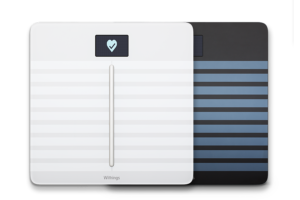 The Body scale is able to deliver comprehensive information over five key metrics. Highly precise weight measurement is provided by Withings Position Control technology and is accurate within .2 pounds, which is leveraged into a fat mass calculation based on age, sex and height.
The Body scale is able to deliver comprehensive information over five key metrics. Highly precise weight measurement is provided by Withings Position Control technology and is accurate within .2 pounds, which is leveraged into a fat mass calculation based on age, sex and height.
The Body scale is also able to calculate muscle mass, water density, and bone mass, providing a fully-realised picture of the inner structure of your body.
A major advantage the Withings Body scale offers over traditional scales is a trend function that displays the last 8 weigh-ins on a built-in LED screen on the scale itself.
This screen also delivers key information, weather forecasts, and can even pair with Withings smartwatches to deliver a complete picture of recent activity and exercise. Up to eight users can create unique profiles on the Body scale and pair the device with over 100 different health and fitness apps to assist in reaching weight loss goals.
The Health Mate app that pairs with the Withings Body smart scale also delivers a broad spectrum of information, presenting nutrition tracking, goal setting, weight analytics, and even calorie consumption.
According to statistics released by Withings that assessed the weight lost by 37,000 Withings scale users, the scale is able to increase weight loss by 400%, which leads us to pick it as 2017’s best overall smart scale.
 Runner Up: Qardiobase Wifi Smart Scale
Runner Up: Qardiobase Wifi Smart Scale
The Qardiobase is health tech manufacturer Qardio’s latest smart scale solution. Offering full-body composition, digital weight measurement, smart feedback, multiple user support and even pregnancy mode, the Qardiobase offers similar features to the Withings Body scale, but is geared more to a hands-on weight loss approach.
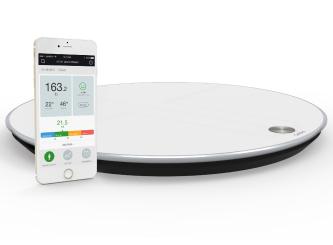 Like the Withings Body Scale, Qardio delivers BMI, muscle, fat, bone, and water assessments, but provide a comprehensive long-term goal setting to motivate users into losing weight.
Like the Withings Body Scale, Qardio delivers BMI, muscle, fat, bone, and water assessments, but provide a comprehensive long-term goal setting to motivate users into losing weight.
The sleek design of the Qardiobase fits into almost any home decor, consisting of a circular white base with a built-in LED screen. Automatic user recognition makes switching between user-specific readouts and settings easy, and wifi connectivity makes it simple to sync data with the Qardio health app.
Gentle feedback is provided in the form of haptic feedback, and the entire unit is able to sync with dedicated apps that are available for a wide variety of devices including the Apple Watch and Android Wear.
The Pregnancy Mode of the Qardiobase is one of the biggest draws of the product, allowing mothers-to-be to track their weekly progress and add pictures to their statistics.
The Qardiobase, although feature-rich, loses out to the Withings Body scale in our 2017 roundup due to a high price point, but is a great pick for expectant mothers or individuals seeking comprehensive weight loss tracking and advice.
 Most Original Tracker
Most Original Tracker
The new year has seen the release of a number of health trackers that don’t exactly fit into any category, but deserve a mention in our roundup due to the impressive level of innovation used in their design.
Fitness trackers don’t all need to be about the steps and calories- let’s take a look at some of the more original trackers released in 2017:
Winner: Skulpt Chisel
The Skulpt Chisel is a new breed of fitness tracker that doesn’t focus on the process of working out, but rather on the end results. Where most fitness tracking devices are concerned with monitoring steps taken, distance traveled, or calories burned, Skulpt cut right to the chase with their product- muscle mass and fat percentage.
 The Skulpt Chisel is a small, wallet sized device that is intended to be placed against a muscle. Once in contact with the skin, the device directs a weak electric current through the muscle tissue, and, with a proprietary algorithm, determines the muscular density of the tissue.
The Skulpt Chisel is a small, wallet sized device that is intended to be placed against a muscle. Once in contact with the skin, the device directs a weak electric current through the muscle tissue, and, with a proprietary algorithm, determines the muscular density of the tissue.
Aimed at fitness enthusiasts that seek to improve their muscle strength, volume, and size, the Chisel can track up to 24 different muscles at once, providing a far more accurate assessment of body composition than any smart scale solution.
The Skulpt Chisel Scanner is able to both measure overall body fat percentage quickly and easily as well as determine the relative strength value and muscle quality of muscle tissue.
Paired with the Skulpt smartphone app, the device can deliver body fat and muscle analysis and present workout guidance on the best muscles to focus on in order to rapidly build muscle strength.
The multiple direct measurements the Skulpt Chisel solution makes allow for observation of the cellular changes that occur in the body at a resolution far higher and more reliable than that of scales, tape measures, calipers, or even whole-body electronic devices.
Muscles in need of attention are mapped out on an interactive body image via the Skulpt app, making it easy to determine which parts of your body required specialized training.
The Skulpt device is a unique and innovative application of miniaturized, multi-electrode composition myography that delivers easy-to-understand and actionable information, and thus is our pick for the most innovative fitness tracker of 2017.
Runner Up: Bloomlife Smart Pregnancy Wearable
Boomlife is the world’s first fitness wearable dedicated to taking the guesswork out of pregnancy. Many trackers focus on providing insight into the changes that occur in the body due to physical exercise- Bloomlife takes the same technology and applies it to tracking and measuring the effect and progression of pregnancy on the body, helping mothers-to-be track their health over the duration of their pregnancy.
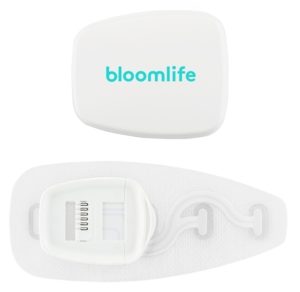 Bloomlife is able to automatically display, track, and count contractions during pregnancy, delivering to pregnant mothers an accurate second opinion on the physiological changes that are occurring on a second-by-second basis.
Bloomlife is able to automatically display, track, and count contractions during pregnancy, delivering to pregnant mothers an accurate second opinion on the physiological changes that are occurring on a second-by-second basis.
The Bloomlife app draws information from the device to present a real-time contraction view that compiles data into an ongoing trends view, allowing for pattern identification leading up to labor.
Bloomlife consists of a small sensor that attaches to a stick-on patch that is placed on the belly. Once attached, the sensor transmits data via bluetooth to a paired smartphone that gathers data 24/7. Backed by clinical science, Bloomlife is safer than ultrasound and doppler, using the natural bio-electrical signals of the body to measure contractions.
One of the best features of Bloomlife is the model via which it is sold- expectant mothers aren’t required to purchase the unit permanently, only “rent” it for the duration of their term.
Labelled by ABC News and CNN as a “must-have” tech product for expectant mothers, Bloomlife is certainly one of the most unique wearables to hit the market this year, but is somewhat limited in functionality and thus comes in at the second most innovative tracker of 2017.
 2017 Fitness Trackers Review Summary
2017 Fitness Trackers Review Summary
Whether you’re looking for a simple movement tracker, or a fully-featured adventure multi-sport GPS activity tracker, the latest wave of wearable tech provides a solution for everybody.
Wearable tech, especially when used to track fitness progression, provides valuable insight into our health and has been clinically proven to increase productivity, assist in achieving greater weight gain, and promote better overall focus and motivation.
With budget trackers offering low-cost health insights to high end fashion smart watches that make a style statement while organizing your calendar for you, wearable tech offers something for everybody and is definitely here to stay.







